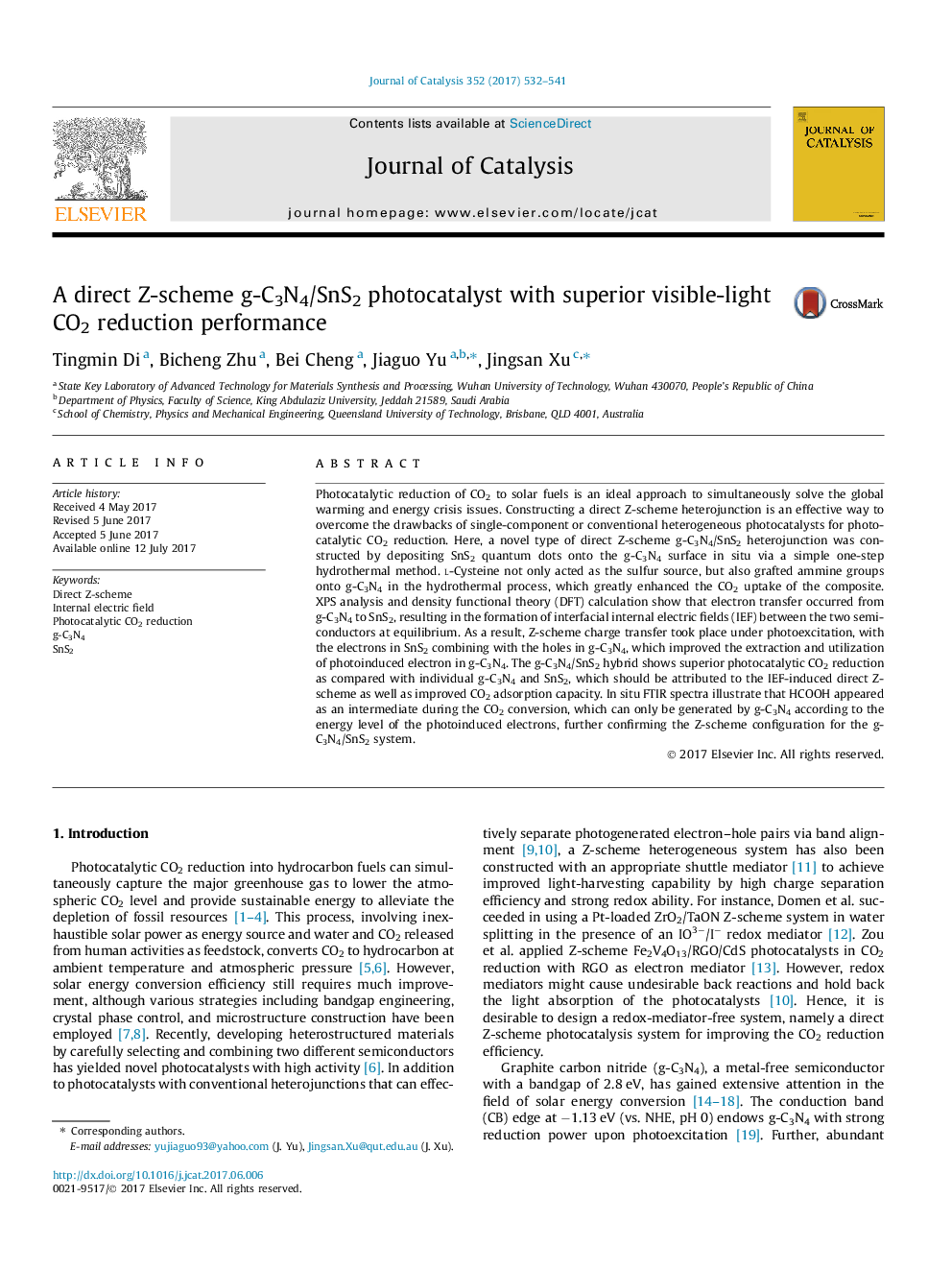| کد مقاله | کد نشریه | سال انتشار | مقاله انگلیسی | نسخه تمام متن |
|---|---|---|---|---|
| 6455449 | 1419757 | 2017 | 10 صفحه PDF | دانلود رایگان |

- SnS2 quantum dots anchored in situ on g-C3N4 by a simple one-step hydrothermal method.
- The internal electric field between g-C3N4 and SnS2 was confirmed.
- Internal-electric-field-induced direct Z-scheme g-C3N4/SnS2 charge transfer for enhanced photocatalytic CO2 reduction.
- In situ FTIR analysis further proved the suggested photocatalytic mechanism.
Photocatalytic reduction of CO2 to solar fuels is an ideal approach to simultaneously solve the global warming and energy crisis issues. Constructing a direct Z-scheme heterojunction is an effective way to overcome the drawbacks of single-component or conventional heterogeneous photocatalysts for photocatalytic CO2 reduction. Here, a novel type of direct Z-scheme g-C3N4/SnS2 heterojunction was constructed by depositing SnS2 quantum dots onto the g-C3N4 surface in situ via a simple one-step hydrothermal method. l-Cysteine not only acted as the sulfur source, but also grafted ammine groups onto g-C3N4 in the hydrothermal process, which greatly enhanced the CO2 uptake of the composite. XPS analysis and density functional theory (DFT) calculation show that electron transfer occurred from g-C3N4 to SnS2, resulting in the formation of interfacial internal electric fields (IEF) between the two semiconductors at equilibrium. As a result, Z-scheme charge transfer took place under photoexcitation, with the electrons in SnS2 combining with the holes in g-C3N4, which improved the extraction and utilization of photoinduced electron in g-C3N4. The g-C3N4/SnS2 hybrid shows superior photocatalytic CO2 reduction as compared with individual g-C3N4 and SnS2, which should be attributed to the IEF-induced direct Z-scheme as well as improved CO2 adsorption capacity. In situ FTIR spectra illustrate that HCOOH appeared as an intermediate during the CO2 conversion, which can only be generated by g-C3N4 according to the energy level of the photoinduced electrons, further confirming the Z-scheme configuration for the g-C3N4/SnS2 system.
82
Journal: Journal of Catalysis - Volume 352, August 2017, Pages 532-541